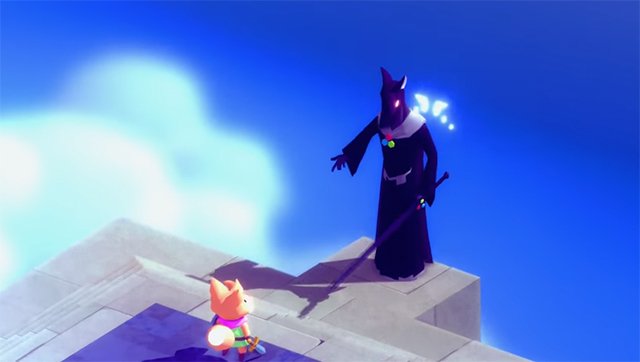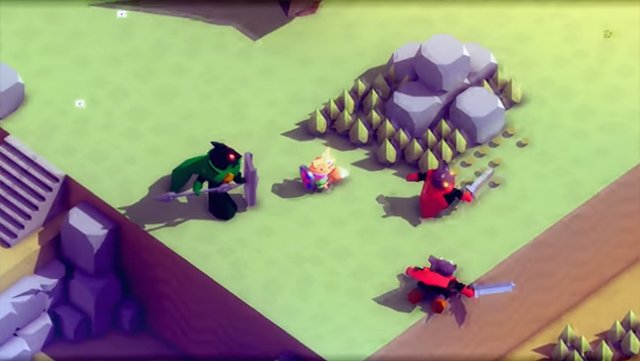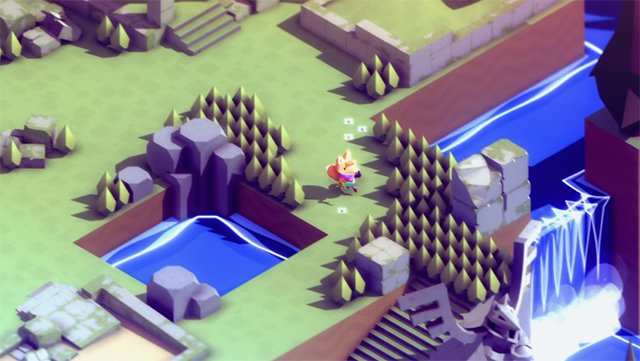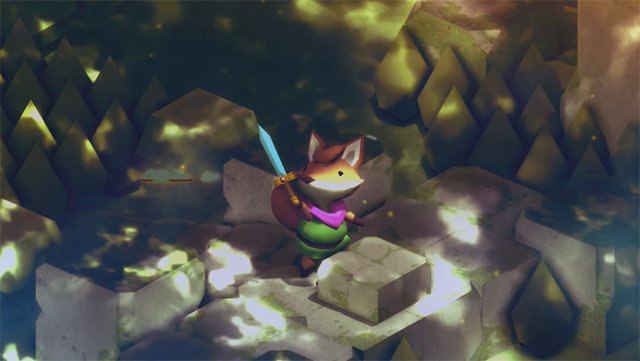Games have gotten really good at explaining things to their players. Obtuse instructions are mostly gone. Instead, HUD elements and frequent tutorials bombard players and make sure they don’t scamper off if they get stuck. And whatever things they can’t figure out, the internet tells them three weeks before the game even comes out. Tunic, an upcoming exploration game built by creator Andrew Shouldice, was built on the premise of reinvigorating that classic sense of discovery. Oh, and the main character is basically Link but a fox.
Tunic Preview: The Elefox in the Room

It’s hard to ignore: Tunic looks a lot like The Legend of Zelda. The perspective, appearance, and gameplay immediately conjure a knee-jerk comparison to Nintendo’s favorite green boy (no, not Luigi). And that’s not an accident, given how much Tunic‘s philosophy aligns with the early games in that series, specifically the very first Zelda. The original Legend of Zelda was notorious for throwing players into the wild without much guidance and letting players discover by doing.
Tunic is planning to uphold that mentality its own way. The game is littered with mysterious runes, which are visible in the trailer. During my pre-recorded hands-off demo at E3 2018, Shouldice was extremely cagey about these symbols, what they meant, and how, if even at all, they could be translated. Without much to go on, it was reminiscent of the language in Fez where, through determination and a keen eye, players could eventually decode the messages strewn about the game. There was an alluring sense of mystery and anticipation leading up to the point where you either figured it out or Googled the answers.
This design focal point echoes through the core gameplay too. Forks in the road are often there to encourage you to go wherever you want, even if that means trekking to a place you aren’t prepared for. Shouldice said that getting destroyed by overleveled foes was part of the fun, which he explained in an effective, brief way.
“I am totally fine with the player going left instead of right and having the player find themselves in a place they’re not ready for,” he said during the demo.
Going left instead of right is the physical manifestation of his design philosophy because wandering around the relatively open spaces naturally leads to discovery. He likened it to getting the sword in Zelda. Being handed the weapon wasn’t as fun to him as stumbling upon it. It feels much more natural and satisfying to earn your gear through exploration rather than getting it in a scripted moment. Tunic, through doing this, is aiming to consistently give the player that feeling.
Tunic Preview: Breaking Links

For all of its similarities, Tunic moves away from its inspirations in a few key ways. Its combat, for one, is much more complex than it initially looks. Aside from the standard sword and shield, you’ll be able to find other items like a lasso, projectile weapon, and stun move. Using these items and moves in conjunction with each other gives the game its depth as you figure out ways to intelligently combine skills and manage your cooldown meters and limited resources.
For example, Shouldice showed the individual uses of the short-range stun move and lasso reminiscent of Scorpion’s rope spear from Mortal Kombat. But both were much more potent when used together, as snatching an enemy and quickly incapacitating them could make quick work of the stronger foes. The different tools allow a more open approach to combat and give it depth that the genre doesn’t usually see.
Shouldice also wants to ensure that his game doesn’t follow the traditional puzzle dungeon structure. He explained that most games like Tunic follow a pattern: you get dropped into a place and have to use the item in very video gamey ways to solve arbitrary puzzles. While he didn’t show any examples to prove his point, he wants the puzzles in his game to feel more natural and explain the mysterious world rather than giving the player a bow and arrow to shoot an out-of-place button.
Tunic Preview: One-Man Band

The game’s vision looks very singular, which makes sense given that Shouldice is Tunic‘s sole developer. Aside from the outsourced audio and music from Terence Lee (from the Double Fine documentary and Dustforce fame), everything in the game’s three-year development is from Shouldice’s quirky brain. It’s quite remarkable, given the vibrant art style and scale he wants for his game. That scale stemmed from him wanting to craft an experience that felt endless.
“I was thinking for long time about special feeling in games where you feel it could go on forever because you don’t know the boundaries,” he said as he explained where the game’s idea originated and why he decided to make it.
Emulating the past is still a irresistible temptation for indie developers. It’s why the market is flooded with Metroidvanias and 16-bit games. Piggybacking off nostalgia can be a cheap trick, but Tunic‘s style and singular vision puts it a few cuts above its indie peers. The game’s mystery makes it harder to accurately judge how it’ll turn out but it is enticing nonetheless. We’ll be able to see if the mystery has a payoff when this Xbox One console launch exclusive comes out at a later, appropriately unknown date.










